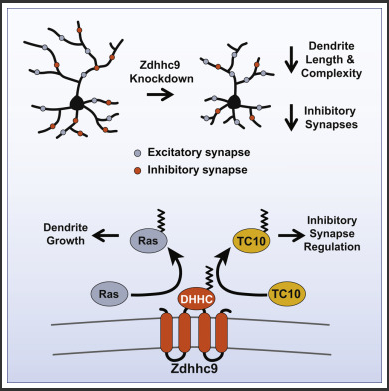Science in the City has profiled a new LSI publication on the x-linked intellectual disability gene Zdhhc9 and its essential role in dendritic growth and the formation of inhibitory synapses.
 “It has been known for a couple of years which genes lead to intellectual disability (ID) in humans,” said first author Dr. Jason Shimell, whose doctoral work in the lab of Dr. Shernaz Bamji contributed to the publication. “The X-Linked Intellectual Disability Gene Zdhhc9 Is Essential for Dendrite Outgrowth and Inhibitory Synapse Formation” in Cell Reports. “We’ve known that Zdhhc9 has an effect, but haven’t been able to show why. Now we have a potential mechanism.”
“It has been known for a couple of years which genes lead to intellectual disability (ID) in humans,” said first author Dr. Jason Shimell, whose doctoral work in the lab of Dr. Shernaz Bamji contributed to the publication. “The X-Linked Intellectual Disability Gene Zdhhc9 Is Essential for Dendrite Outgrowth and Inhibitory Synapse Formation” in Cell Reports. “We’ve known that Zdhhc9 has an effect, but haven’t been able to show why. Now we have a potential mechanism.”
Loss-of-function variants in ZDHHC9 have been identified in patients with X-linked intellectual disability (XLID), according to senior author Dr. Bamji. “About 2% of people with X-linked intellectual disability have a loss of function in Zdhhc9,” she said. “Of those two percent, over 75% have epileptic co-morbidities.” This research demonstrates that this variance in Zdhhc9 can increase the ratio of excitatory-to-inhibitory (E:I) synapses and disrupt proper dendritic arborization, presenting a plausible mechanism for how loss of ZDHHC9 function may contribute to XLID and epilepsy.
Read Science in the City’s story on Zdhhc9
